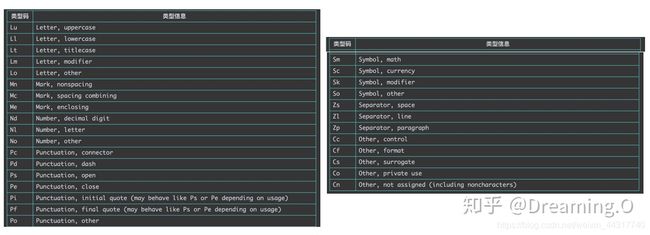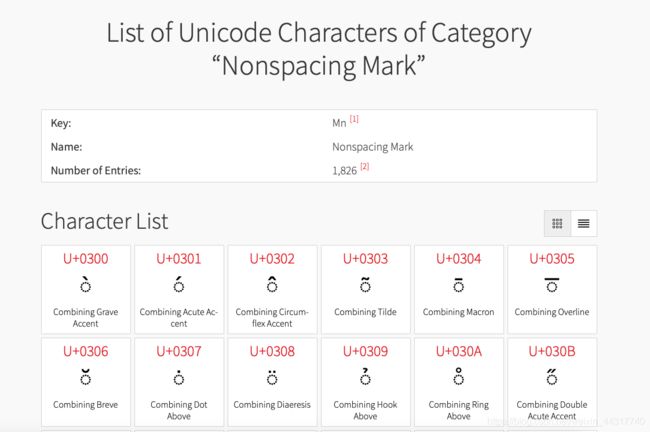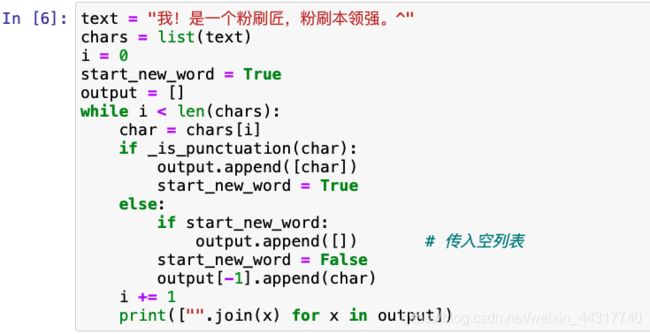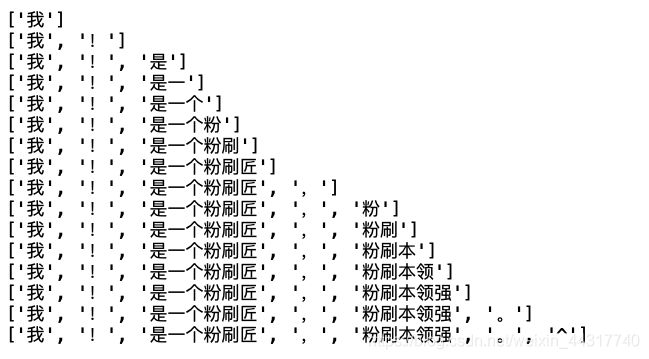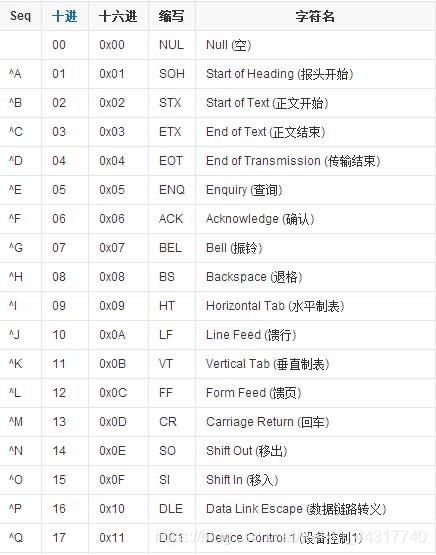hugging-face Transformer tokenization_bert.py
tokenization bert.py
- 函数
-
- load_vocab
- whitespace_tokenize
- 类
-
- BasicTokenizer类(继承自Object)
-
- _tokenize_chinese_chars函数
- _is_chinese_char函数
- _run_strip_accents函数
- _is_punctuation函数
- _run_split_on_punc函数
- _is_control函数
- _is_whitespace函数
- _clean_text函数
- tokenize函数
- WordpieceTokenizer类(继承自object)
-
- tokenize函数
- BertTokenizer类(继承自PreTrainedTokenizer)
-
- 初始化
- vocab_size函数
- get_vocab函数
- _tokenize函数
- _convert_token_to_id函数
- _convert_id_to_token函数
- convert_tokens_to_string函数
- build_inputs_with_special_tokens函数
- get_special_tokens_mask函数
- create_token_type_ids_from_sequences函数
- save_vocabulary函数
函数
load_vocab
把词汇表加载为一个有序字典
def load_vocab(vocab_file):
"""Loads a vocabulary file into a dictionary."""
"""把词汇表加载为一个有序字典"""
vocab = collections.OrderedDict() # 有序字典
with open(vocab_file, "r", encoding="utf-8") as reader: # vocab_file是一个txt文件一个单词一行
tokens = reader.readlines() # 依次读取每行
for index, token in enumerate(tokens): # index:行号,从0开始
token = token.rstrip("\n") # rstrip:删除字符串末尾的指定字符
vocab[token] = index # token:键;index:值。
# eg. OrderedDict([('d1={}', 0), ("d1['a']='A'", 1), ("d1['c']='C'", 2)])
return vocab # vocab:有序字典
whitespace_tokenize
在一段文本上,删除空格并拆分
def whitespace_tokenize(text):
"""Runs basic whitespace cleaning and splitting on a piece of text."""
"""在一段文本上,删除空格并拆分"""
text = text.strip() # strip:删除字符串首尾的指定字符
if not text: # text没有内容就返回空列表
return []
tokens = text.split() # split()函数按照空格进行分割,并返回分割后的字符串列表。
return tokens # tokens:列表
类
BasicTokenizer类(继承自Object)
基本的分词(标点符号拆分、小写)
参数:
do_lower_case :bool, optional, 默认为True 当分词时是否对输入小写。
never_split :Iterable, 字符串的列表, optional. 分词期间不被切分的tokens的集合,只有当do_basic_tokenize=True的时候才有效。
tokenize_chinese_chars :bool, optional, 默认为True. 是否对中文字符进行分词。
strip_accents:bool, optional. 用于去除变音符号。
附加符号或称变音符号(accents),是指添加在字母上面的符号,以更改字母的发音或者以区分拼写相似词语。例如汉语拼音字母“ü”上面的两个小点,或“á”、“à”字母上面的标调符。
_tokenize_chinese_chars函数
在任何中日韩字符前后添加空格
def _tokenize_chinese_chars(self, text):
"""Adds whitespace around any CJK character."""
# 在任何中日韩字符前后添加空格
output = []
for char in text:
cp = ord(char) # ord()以一个字符(长度为1的字符串)作为参数,返回对应的 ASCII 数值,或者 Unicode 数值
if self._is_chinese_char(cp):
output.append(" ")
output.append(char)
output.append(" ")
else:
output.append(char)
return "".join(output) # join() 方法用于将序列中的元素以指定的字符连接生成一个新的字符串。
ord()以一个字符(长度为1的字符串)作为参数,返回对应的 ASCII 数值,或者 Unicode 数值
join() 方法用于将序列中的元素以指定的字符连接生成一个新的字符串。
_is_chinese_char函数
用于判断是否是中日韩字符
Unicode 是一个符号集,它只规定了符号的二进制代码,却没有规定这个二进制代码应该如何存储。
https://home.unicode.org
中日韩汉字编码表:http://www.chi2ko.com/tool/CJK.htmlUTF-8 就是在互联网上使用最广的一种 Unicode 的实现方式。
UTF-8 的编码规则很简单,只有二条:
1)对于单字节的符号,字节的第一位设为0,后面7位为这个符号的 Unicode 码。因此对于英语字母,UTF-8 编码和 ASCII码是相同的。
2)对于n字节的符号(n > 1),第一个字节的前n位都设为1,第n +1位设为0,后面字节的前两位一律设为10。剩下的没有提及的二进制位,全部为这个符号的 Unicode 码。转载自:http://www.ruanyifeng.com/blog/2007/10/ascii_unicode_and_utf-8.html
_run_strip_accents函数
在一段文本中去除变音符号
def _run_strip_accents(self, text):
"""Strips accents from a piece of text."""
# 在一段文本中去除变音符号
# 先将文本标准化;进入循环,判断文本中字符的类型(如果是变音符号则跳过当前循环,否则将字符加入到空列表中);返回拼接后的字符串
text = unicodedata.normalize("NFD", text) # unicodedata.normalize:对Unicode文本进行标准化。
output = []
for char in text:
cat = unicodedata.category(char) # unicodedata.category:返回一个字符在UNICODE里分类的类型
# Category一共分为 Letter, Mark, Number, Punctuation, Symbol, Seperator, Other 七大类
if cat == "Mn": # Mark Nonspacing 应该是变音符号
continue
output.append(char)
return "".join(output)
unicodedata.normalize(form, unistr)
把一串UNICODE字符串转换为普通格式的字符串,具体格式支持NFC、NFKC、NFD和NFKD格式。
Normalization Form D (NFD),Normalization Form KD (NFKD),Normalization Form C (NFC),和Normalization Form KC (NFKC)。
大约来说,NFD和NFKD将可能的字符进行分解,而NFC和NFKC将可能的字符进行组合。
unicodedata.category(chr)
返回一个字符在UNICODE里分类的类型。
查看unicode的相关属性 https://www.compart.com/en/unicode/category
_is_punctuation函数
def _is_punctuation(char):
"""Checks whether `char` is a punctuation character."""
# 检查字符'char'是不是一个标点符号
cp = ord(char)
# We treat all non-letter/number ASCII as punctuation.
# 将所有非字母/数字的ASCII视为标点
# Characters such as "^", "$", and "`" are not in the Unicode
# Punctuation class but we treat them as punctuation anyways, for
# consistency.
# "^", "$", 和 "`"不在标点的类别中,但是为了保持一致性将它们看作为标点
# 判断ASCII
if (cp >= 33 and cp <= 47) or (cp >= 58 and cp <= 64) or (cp >= 91 and cp <= 96) or (cp >= 123 and cp <= 126):
return True
# 判断unicode类别
cat = unicodedata.category(char)
if cat.startswith("P"): # 如果以P开头
return True
return False
_run_split_on_punc函数
以标点符号来切分句子,返回列表。
def _run_split_on_punc(self, text, never_split=None):
"""Splits punctuation on a piece of text."""
# 以标点符号来切分句子,返回列表
# 先判断此段文本能否分割;如果可以,则:(1)
if never_split is not None and text in never_split:
return [text] # text = "我是一个粉刷匠,粉刷本领强"
chars = list(text) # ['我', '是', '一', '个', '粉', '刷', '匠', ',', '粉', '刷', '本', '领', '强']
i = 0
start_new_word = True
output = []
while i < len(chars):
char = chars[i]
if _is_punctuation(char):
output.append([char]) # 列表嵌套列表
# [['我'], ['是'], ['一'], ['个'], ['粉'], ['刷'], ['匠']]
# "".join的时候[子列表,子列表,……]
start_new_word = True
else:
if start_new_word:
output.append([]) # 传入空列表
start_new_word = False
output[-1].append(char) # 令output = [['我']]
# [['我', '我', '是', '一', '个', '粉', '刷', '匠'],['粉', '刷', '本', '领', '强']]
# "".join的时候[子列表,子列表,……],子列表中的字符直接拼接
i += 1
return ["".join(x) for x in output] # if为True的输出:['我', '是', '一', '个', '粉', '刷', '匠']
# False的输出:['我我是一个粉刷匠', '粉刷本领强']
jupyter尝试:
_is_control函数
判断’char’是否是一个控制字符
def _is_control(char):
"""Checks whether `char` is a control character."""
# 判断'char'是否是一个控制字符
# These are technically control characters but we count them as whitespace
# characters.从技术上讲,它们是控制字符,但我们将其视为空格字符。
# \t水平制表(HT) (跳到下一个TAB位置)
# \r回车(CR) ,将当前位置移到本行开头
# \n换行(LF) ,将当前位置移到下一行开头 https://baike.baidu.com/item/转义字符#2
if char == "\t" or char == "\n" or char == "\r":
return False
cat = unicodedata.category(char)
if cat.startswith("C"):
return True
return False
_is_whitespace函数
判断char是否是一个空格
def _is_whitespace(char):
"""Checks whether `char` is a whitespace character."""
# 判断`char`是否是一个空格
# \t, \n, and \r are technically contorl characters but we treat them
# as whitespace since they are generally considered as such.
# 从技术上讲,\t, \n, \r是控制字符,但我们将其视为空格字符。
if char == " " or char == "\t" or char == "\n" or char == "\r":
return True
cat = unicodedata.category(char)
if cat == "Zs": # Zs separator,space
return True
return False
_clean_text函数
删除无效字符,清除空格
def _clean_text(self, text):
"""Performs invalid character removal and whitespace cleanup on text."""
# 删除无效字符,清除空格
output = []
for char in text:
cp = ord(char)
if cp == 0 or cp == 0xFFFD or _is_control(char):
continue
if _is_whitespace(char):
output.append(" ")
else:
output.append(char)
return "".join(output)
tokenize函数
私有变量:小写和一个前导下划线
_private_valuepython中不存在私有变量一说,若是遇到需要保护的变量,使用小写和一个前导下划线。
但这只是程序员之间的一个约定,用于警告说明这是一个私有变量,外部类不要去访问它。
但实际上,外部类还是可以访问到这个变量。
def tokenize(self, text, never_split=None):
"""Basic Tokenization of a piece of text.
Split on "white spaces" only, for sub-word tokenization, see WordPieceTokenizer.
对一段文本的基本分词。仅在空格的地方进行分词,对于子词的话参阅WordPieceTokenizer
Args:
**never_split**: (`optional`) list of str
Kept for backward compatibility purposes.保持向后兼容目的
Now implemented directly at the base class level (see :func:`PreTrainedTokenizer.tokenize`)
List of token not to split. 不进行split的token列表
"""
# union() returns a new set by concatenating the two sets.
# union() 方法返回两个集合的并集,即包含了所有集合的元素,重复的元素只会出现一次。
never_split = self.never_split.union(set(never_split)) if never_split else self.never_split
# This was added on November 1st, 2018 for the multilingual and Chinese
# models. This is also applied to the English models now, but it doesn't
# matter since the English models were not trained on any Chinese data
# and generally don't have any Chinese data in them (there are Chinese
# characters in the vocabulary because Wikipedia does have some Chinese
# words in the English Wikipedia.).
if self.tokenize_chinese_chars:
text = self._tokenize_chinese_chars(text)
orig_tokens = whitespace_tokenize(text)
split_tokens = []
for token in orig_tokens:
if token not in never_split:
if self.do_lower_case:
token = token.lower()
if self.strip_accents is not False:
token = self._run_strip_accents(token)
elif self.strip_accents:
token = self._run_strip_accents(token)
split_tokens.extend(self._run_split_on_punc(token, never_split))
# extend() 函数用于在列表末尾一次性追加另一个序列中的多个值(用新列表扩展原来的列表)。
output_tokens = whitespace_tokenize(" ".join(split_tokens))
return output_tokens
extend() 函数用于在列表末尾一次性追加另一个序列中的多个值(用新列表扩展原来的列表)。
union() 方法返回两个集合的并集,即包含了所有集合的元素,重复的元素只会出现一次。
控制字符是出现于特定的信息文本中,表示某一控制功能的字符。
WordpieceTokenizer类(继承自object)
WordpieceTokenizer是将BasicTokenizer的结果进一步做更细粒度的切分。做这一步的目的主要是为了去除未登录词对模型效果的影响。这一过程对中文没有影响,因为在前面BasicTokenizer里面已经切分成以字为单位的了。
class WordpieceTokenizer(object):
"""Runs WordPiece tokenization."""
# 把word拆成piece一片一片。
# WordPiece的一种主要的实现方式叫做BPE(Byte-Pair Encoding)双字节编码
# WordpieceTokenizer是将BasicTokenizer的结果进一步做更细粒度的切分。
# 做这一步的目的主要是为了去除未登录词对模型效果的影响。
# 这一过程对中文没有影响,因为在前面BasicTokenizer里面已经切分成以字为单位的了。
def __init__(self, vocab, unk_token, max_input_chars_per_word=100):
self.vocab = vocab
self.unk_token = unk_token
self.max_input_chars_per_word = max_input_chars_per_word # 每个单词最多的输入字符
tokenize函数
def tokenize(self, text):
"""Tokenizes a piece of text into its word pieces.
# 将一段文本标记为词片段形式
This uses a greedy longest-match-first algorithm to perform tokenization
using the given vocabulary. 贪心的最大正向匹配算法
For example:
input = "unaffable"
output = ["un", "##aff", "##able"]
Args:
text: A single token or whitespace separated tokens. This should have
already been passed through `BasicTokenizer`.
text:BasicTokenizer的输出,即单个的token或空格分隔的标记
Returns:
A list of wordpiece tokens.
返回词片段tokens
"""
output_tokens = []
for token in whitespace_tokenize(text):
chars = list(token) # token = 'xdcfvgbhjkn';
# chars = ['x', 'd', 'c', 'f', 'v', 'g', 'b', 'h', 'j', 'k', 'n']
if len(chars) > self.max_input_chars_per_word: # 如果单词的字符长度大于阈值,这个单词本身就不要了,替换为unk_token
output_tokens.append(self.unk_token) # output_tokens列表中加入unk_token
continue
is_bad = False # 是否是坏词
start = 0
sub_tokens = [] # 切分后的词片段
while start < len(chars): # 不满足循环的条件就跳到下一段代码
end = len(chars)
cur_substr = None
while start < end:
substr = "".join(chars[start:end])
if start > 0:
substr = "##" + substr # 表示这个词是接着前面的,这样使得WordPiece切分是可逆的(可以恢复出“真正”的词)
if substr in self.vocab:
cur_substr = substr
break
end -= 1
if cur_substr is None:
# 上面循环直到结束都没有找到在给定词表中的词片段,则认为是坏词
is_bad = True
break
sub_tokens.append(cur_substr)
start = end
if is_bad:
output_tokens.append(self.unk_token)
else:
output_tokens.extend(sub_tokens)
return output_tokens
BertTokenizer类(继承自PreTrainedTokenizer)
基于WordPiece
参数:
vocab_files: str. 包括词汇表的文件。
do_lower_case : bool,optional:默认为True. 在分词的时候输入是否小写。
do_basic_tokenize :bool, optional,默认为True. 是否在wordpiece之前做基本的分词。
never_split :Iterable, 字符串的列表, optional. 分词期间不被切分的tokens的集合,只有当do_basic_tokenize=True的时候才有效。
unk_token :str, optional, 默认为"[UNK]". 词汇表当中没有的未知的token,不能被转化为一个ID,会被设置为unk_token的ID。
sep_token:str, optional, 默认为"[SEP]". 分隔器token,在由多个序列去构建一个序列的时候会使用它;也会被用作一个特殊标记构建的序列的最后一个token。
pad_token :str, optional, 默认为"[PAD]". 用于padding,当进行序列长度不一致的批处理的时候会用到。
cls_token :str, optional, 默认为"[CLS]". 序列分类的时候被使用作为分类器token。当序列由特殊tokens构建而成的时候,会作为第一个token。
mask_token :str, optional, 默认为"[MASK]". 用于对值进行掩盖,在训练MLM的时候会被使用。模型会尝试去预测这个token。
tokenize_chinese_chars :bool, optional, 默认为True. 是否对中文字符进行分词。
strip_accents:bool, optional. 用于去除变音符号。
初始化
self.ids_to_tokens = collections.OrderedDict([(ids, tok) for tok, ids in self.vocab.items()])
# 由词汇表构造一个有序字典,id-tokens
vocab_size函数
def vocab_size(self): # 返回词汇表的大小
return len(self.vocab)
get_vocab函数
def get_vocab(self):
# dict() 函数用于创建一个字典
return dict(self.vocab, **self.added_tokens_encoder)
# self.added_tokens_encoder是一个字典 Dict[str, int]
_tokenize函数
def _tokenize(self, text):
split_tokens = []
# 判断是否做基础分词。
# T:基础分词+wordpiece;F:wordpiece
if self.do_basic_tokenize:
for token in self.basic_tokenizer.tokenize(text, never_split=self.all_special_tokens): # 所有特殊的token不被分割
# If the token is part of the never_split set
# 判断是否在never_split列表中。
if token in self.basic_tokenizer.never_split:
split_tokens.append(token)
else:
split_tokens += self.wordpiece_tokenizer.tokenize(token)
else:
split_tokens = self.wordpiece_tokenizer.tokenize(text)
return split_tokens # 返回(基础分词)+ wordpiece分词后的列表
_convert_token_to_id函数
def _convert_token_to_id(self, token):
""" Converts a token (str) in an id using the vocab. """
# 通过词汇表将一个token(字符串)转换为一个ID
return self.vocab.get(token, self.vocab.get(self.unk_token))
python dict.get(key, default=None)
key – 字典中要查找的键。
default – 如果指定的键不存在时,返回该默认值。
返回指定键的值,如果键不在字典中返回默认值 None 或者指定的默认值。
_convert_id_to_token函数
def _convert_id_to_token(self, index):
"""Converts an index (integer) in a token (str) using the vocab."""
# 通过词汇表将一个整数的索引值转化为一个token(字符串)
return self.ids_to_tokens.get(index, self.unk_token)
convert_tokens_to_string函数
def convert_tokens_to_string(self, tokens):
""" Converts a sequence of tokens (string) in a single string. """
# 将多个字符串合成一个单一的字符串
# wordpiece后的结果:un,##aff,##able -> un ##aff ##able -> unaffable
out_string = " ".join(tokens).replace(" ##", "").strip() # strip()去除头尾的空格
return out_string
build_inputs_with_special_tokens函数
def build_inputs_with_special_tokens(
self, token_ids_0: List[int], token_ids_1: Optional[List[int]] = None
) -> List[int]:
"""
为模型构建输入,从一个序列或一对序列,对于序列分类任务,通过concat和add特殊字符
Build model inputs from a sequence or a pair of sequence for sequence classification tasks
by concatenating and adding special tokens.
A BERT sequence has the following format:
- single sequence: ``[CLS] X [SEP]``
- pair of sequences: ``[CLS] A [SEP] B [SEP]``
Args:
token_ids_0 (:obj:`List[int]`):
List of IDs to which the special tokens will be added.
特殊token将被加入到的ID列表
token_ids_1 (:obj:`List[int]`, `optional`):
Optional second list of IDs for sequence pairs.
Returns:
:obj:`List[int]`: List of `input IDs <../glossary.html#input-ids>`__ with the appropriate special tokens.
"""
if token_ids_1 is None:
return [self.cls_token_id] + token_ids_0 + [self.sep_token_id] # [CLS] X [SEP]
cls = [self.cls_token_id]
sep = [self.sep_token_id]
return cls + token_ids_0 + sep + token_ids_1 + sep # [CLS] A [SEP] B [SEP]
get_special_tokens_mask函数
def get_special_tokens_mask(
self, token_ids_0: List[int], token_ids_1: Optional[List[int]] = None, already_has_special_tokens: bool = False
) -> List[int]:
"""
Retrieve sequence ids from a token list that has no special tokens added. This method is called when adding
special tokens using the tokenizer ``prepare_for_model`` method.
从一个没有特殊token添加的列表 恢复出来 序列的ID
Args:
token_ids_0 (:obj:`List[int]`):
List of IDs.IDs的列表
token_ids_1 (:obj:`List[int]`, `optional`):
Optional second list of IDs for sequence pairs.
序列对IDs的列表
already_has_special_tokens (:obj:`bool`, `optional`, defaults to :obj:`False`):
Whether or not the token list is already formatted with special tokens for the model.
token列表是否已经用特殊token格式化
Returns:
:obj:`List[int]`: A list of integers in the range [0, 1]: 1 for a special token, 0 for a sequence token.
返回一个整数构成的列表,1代表特殊token,0代表序列token
"""
if already_has_special_tokens: # 有特殊的token
if token_ids_1 is not None: # 有第二个列表
raise ValueError(
"You should not supply a second sequence if the provided sequence of "
"ids is already formated with special tokens for the model."
)
# 当是sep和cls的时候为1,其他为0
# lamda冒号左边的x是token_ids_0中的每个元素,冒号右边是当前x的返回值
return list(map(lambda x: 1 if x in [self.sep_token_id, self.cls_token_id] else 0, token_ids_0))
if token_ids_1 is not None: # 没有特殊的token,有第二个列表
# cls + 第一个列表的长度 + sep + 第二个列表的长度 + sep
return [1] + ([0] * len(token_ids_0)) + [1] + ([0] * len(token_ids_1)) + [1]
# cls + 第一个列表的长度 + sep
return [1] + ([0] * len(token_ids_0)) + [1] # 没有特殊的token,没有第二个列表
create_token_type_ids_from_sequences函数
def create_token_type_ids_from_sequences(
self, token_ids_0: List[int], token_ids_1: Optional[List[int]] = None
) -> List[int]:
"""
Create a mask from the two sequences passed to be used in a sequence-pair classification task.
# 从传递给序列对分类任务的两个序列中创建一个mask。
A BERT sequence pair mask has the following format:
::
0 0 0 0 0 0 0 0 0 0 0 1 1 1 1 1 1 1 1 1
| first sequence | second sequence |
If :obj:`token_ids_1` is :obj:`None`, this method only returns the first portion of the mask (0s).
如果只有一个序列,则只返回0的那部分。
Args:
token_ids_0 (:obj:`List[int]`):
List of IDs.
token_ids_1 (:obj:`List[int]`, `optional`):
Optional second list of IDs for sequence pairs.
Returns:
:obj:`List[int]`: List of `token type IDs <../glossary.html#token-type-ids>`_ according to the given
sequence(s).
"""
sep = [self.sep_token_id]
cls = [self.cls_token_id]
if token_ids_1 is None:
return len(cls + token_ids_0 + sep) * [0]
# 返回只有0和1的列表。0表示第一个序列;1表示第二个序列。
return len(cls + token_ids_0 + sep) * [0] + len(token_ids_1 + sep) * [1]
save_vocabulary函数
def save_vocabulary(self, vocab_path):
"""
Save the vocabulary (copy original file) and special tokens file to a directory目录.
保存词汇表和特殊token文件到一个目录。
Args:
vocab_path (:obj:`str`):
The directory in which to save the vocabulary.
保存词汇表的目录
Returns:
:obj:`Tuple(str)`: Paths to the files saved.文件被存储的路径
"""
index = 0
if os.path.isdir(vocab_path): # os.path.isdir:判断是不是路径
vocab_file = os.path.join(vocab_path, VOCAB_FILES_NAMES["vocab_file"])
else:
vocab_file = vocab_path
with open(vocab_file, "w", encoding="utf-8") as writer:
# self.vocab:OrderedDict([('d1={}', 0), ("d1['a']='A'", 1)])
# sorted函数中,key主要是用来进行比较的元素
# 当列表较为复杂时,以列表中的 每个元素的 第二个数据进行排序,即以token_index来排序。
for token, token_index in sorted(self.vocab.items(), key=lambda kv: kv[1]):
if index != token_index:
# logger.warning:某些没有预料到的事件的提示,或者在将来可能会出现的问题提示。例如:磁盘空间不足。但是软件还是会照常运行。
logger.warning(
"Saving vocabulary to {}: vocabulary indices are not consecutive."
" Please check that the vocabulary is not corrupted破坏!".format(vocab_file)
)
index = token_index
writer.write(token + "\n")
index += 1
return (vocab_file,)
